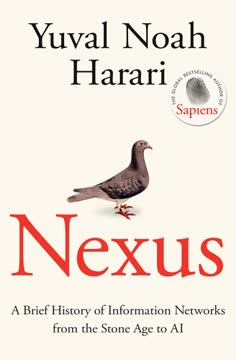Key Takeaways
1. Archaeology illuminates the vast, diverse human past.
The human past is much longer, richer, and more diverse, stretching back 3 million years or so to our early tool-making ancestors on the African savanna.
Beyond written records. Archaeology provides insights into the human past that written records cannot, extending our understanding far beyond the relatively recent invention of writing. It allows us to study societies and individuals, both literate and non-literate, offering a more complete picture of human experience.
Global perspective. Archaeology is global in scope, revealing the diversity of human cultures and societies across the world. It helps us understand how humans have adapted to different environments and social circumstances, from the tropics to the Arctic.
Understanding change. Archaeology is the study of change, documenting how human societies have evolved over millions of years. It allows us to examine long-term trends, such as the origins of agriculture, the development of cities, and the impact of climate change, providing a unique perspective on the human story.
2. Human evolution is a story of adaptation and change.
The model of evolution through natural selection was given further support by advances in genetics, beginning with Austrian botanist Gregor Mendel’s plant breeding experiments in the 1860s, which showed how particular characteristics are passed from parent to offspring.
Evolutionary processes. Human evolution is a continuous process of adaptation and change, driven by natural selection. Species are not fixed, but constantly evolving in response to environmental pressures and social circumstances.
Anatomical and behavioral co-evolution. The human story involves changes not only in technology and society, but also in the physical evolution of the human species. The development of material culture, such as stone tools, has played a vital role in shaping human anatomy and behavior.
Rejecting creationism. Archaeology provides evidence that contradicts creationist views, demonstrating the steady morphological and behavioral change that preceded the development of modern humans. The fossil record of human evolution clearly shows the development of humans from earlier, archaic human forms.
3. Africa is the cradle of humanity and tool use.
World prehistory is empowering in that it documents the whole human past and is not restricted to dominant political players such as literate states and empires, with their rich iconography, military strength, and historical records.
African origins. The human story begins in Africa, where the earliest hominins emerged and the first stone tools were made. This challenges the Eurocentric view that human culture originated in western Europe.
Material culture. The creation of stone tools marks a crucial step in human evolution, enabling early humans to cope with a wide range of environments. Material culture has allowed humans to populate the globe and develop complex societies.
Global impact. The study of world prehistory allows us to see the patterns of the human past in fuller outline and in greater detail than ever before. It illustrates the full diversity of human culture and society and shows how humans have changed and adapted.
4. Early hominins adapted through diet and social structures.
The broad perspective of prehistory presents a similarly long-term view of human interaction with the environment, and allows us to pose key questions about the origins of agriculture, the development of cities, and various other phenomena that emerged, apparently independently, in different parts of the world.
Dietary adaptations. Early hominins adapted to their environments through changes in diet, including the exploitation of new food sources and the development of tools for processing food. The shift to a more omnivorous diet, including meat and marrow, may have been a vital step in enabling brain expansion.
Social organization. The development of social structures, such as bands, tribes, chiefdoms, and states, reflects the increasing complexity of human societies. These structures have evolved in response to factors such as population growth, environmental change, and competition for resources.
Cultural ecology. The concept of cultural ecology helps us understand how human societies have adapted to their environments. By studying the relationship between humans and their environment, we can gain insights into the causes and consequences of social and cultural change.
5. The Oldowan toolkit reflects early hominin behavior.
The reliance on material culture, on tools, is hence distinctively human, and has given humans a substantial advantage in coping with a wide range of environments.
Simple technology. The Oldowan toolkit, characterized by simple core forms and sharp-edged flakes, represents the earliest known stone tool technology. These tools were used for a variety of tasks, including butchering animals, processing plants, and woodworking.
Adaptive advantage. The development of the Oldowan toolkit gave early hominins a significant advantage in coping with a wide range of environments. It allowed them to access new food sources and to process resources more efficiently.
Behavioral inferences. By studying the Oldowan toolkit, we can gain insights into the behavior of early hominins, including their social organization, diet, and technology. The toolkit provides evidence for the development of human cognitive abilities and the capacity for cultural transmission.
6. Dispersal out of Africa marked a new phase of adaptation.
The initial expansion of Homo ergaster from Africa 101
Geographic expansion. The dispersal of Homo ergaster out of Africa represents a new phase in human evolution, as early humans adapted to survive in less hospitable environments. This expansion was made possible by the development of new technologies and social structures.
Evolutionary changes. The colonization of Eurasia led to the development of new hominin species, including Homo erectus in eastern Asia and Homo neanderthalensis in Europe. These species adapted to local conditions and developed their own unique cultural and technological traditions.
Climate and adaptation. Climatic and environmental change have been the constant backdrop to the development of humans and human society over the past 3 million years, providing both challenges and opportunities. The ability to adapt to rapidly changing conditions has been key to human survival and success.
7. Dating methods are crucial for understanding prehistory.
The construction of a reliable time frame has been an essential ingredient in building a secure knowledge of human ancestors and their material culture.
Relative dating. Principles such as superposition and association allow archaeologists to establish relative chronologies, ordering events and artifacts in sequence. These methods are essential for understanding the relationships between different sites and cultures.
Absolute dating. Radiometric methods, such as radiocarbon dating and potassium-argon dating, provide numerical ages for archaeological remains. These techniques have revolutionized our understanding of the human past, allowing us to construct a truly global chronology.
Scientific techniques. A range of scientific techniques, including luminescence dating, uranium-series dating, and electron-spin resonance dating, are used to date archaeological remains and to reconstruct ancient environments. These methods provide valuable insights into the timing and pace of human evolution and cultural change.
8. Cultural ecology and agency theory explain societal change.
Cultural ecology can be a powerful tool for interpreting social practices, settlement patterns, and cultural change.
Cultural ecology. This approach emphasizes the role of the environment in shaping human culture and society. It focuses on how societies adapt to the challenges and opportunities of their environments, and how these adaptations lead to social and cultural change.
Agency theory. This approach considers individuals in the past as knowledgeable actors who are able to effect change and achieve specific objectives. It highlights the role of individuals in shaping their societies and cultures.
Complementary approaches. Cultural ecology and agency theory are complementary approaches to understanding prehistory. The former operates at the level of whole societies changing over the long term, while the latter operates at the level of individual communities within a lifetime or across a few generations.
Last updated:
Review Summary
Readers find The Human Past comprehensive but overwhelming. Many praise its depth and global coverage, calling it invaluable for archaeology students and enthusiasts. Some note it's better as a reference than an introduction. Criticisms include information overload, physical unwieldiness, and grammar errors. Despite these issues, most reviewers appreciate the book's extensive content and usefulness across various archaeology courses. Some readers found it unexpectedly engaging, while others struggled with its density and presumed background knowledge.
Similar Books
Download PDF
Download EPUB
.epub digital book format is ideal for reading ebooks on phones, tablets, and e-readers.













